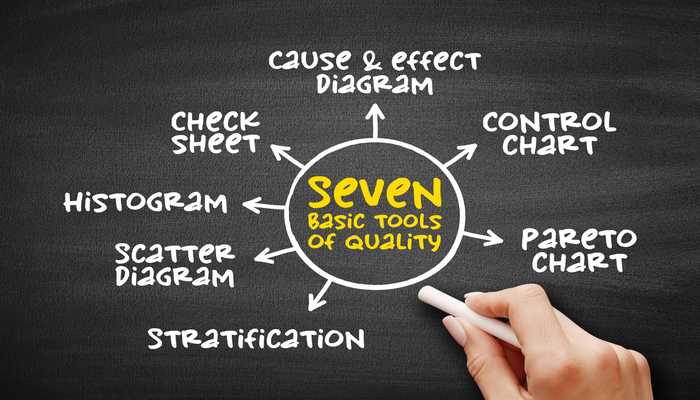Summary: DFMEA – Design Failure Mode and Effects Analysis- is a structured method used early in product development to identify potential design failure modes, assess their effects and causes, prioritize risk, and drive corrective actions before release. It complements risk-based quality systems and is aligned with the AIAG-VDA seven-step approach and Action Priority (AP) to guide decisions, making it essential for robust and efficient product development.
What is DFMEA?
DFMEA (Design Failure Mode and Effects Analysis) is a systematic analysis that anticipates how a design could fail, why it might fail, and what the customer impact would be, so you can prevent those issues at the drawing board. It’s widely used across industries to strengthen reliability and safety while reducing costs associated with late design changes.
Why it matters: Catching weaknesses in the design phase is far cheaper than fixing field failures or warranty claims later. Leading references (ASQ and AIAG/VDA) treat DFMEA as a core risk tool embedded in product development.
Benefits of DFMEA
➡️ Early Risk Identification: DFMEA allows you to identify potential design issues early in the development process, reducing the cost and effort of fixing problems later.
➡️ Improved Product Reliability: By identifying and addressing failure modes, DFMEA helps improve the overall reliability and safety of the product.
➡️ Cost Reduction: Preventing design-related issues early leads to significant savings by avoiding costly revisions and warranty claims.
➡️ Better Decision Making: With clear risk prioritization, DFMEA guides teams to focus their efforts on the most critical issues, leading to better-informed design decisions.
DFMEA vs. PFMEA (and where each fits)
DFMEA focuses on the design itself: form, materials, interfaces, tolerances, functional performance.
PFMEA focuses on the manufacturing and assembly process: operations, machines, fixtures, human factors, process controls.
Use DFMEA to harden the product design before handoff; use PFMEA to ensure the process will consistently make that design to spec. They’re complementary and often run in sequence.
Looking to improve your DFMEA process?
Optimize risk analysis and team collaboration with flowdit.
The AIAG-VDA Seven-Step DFMEA Process (modern best practice)
The AIAG & VDA FMEA Handbook (2019) harmonized approaches and formalized a 7-step method that teams can apply with spreadsheets or software. It structures DFMEA into clear phases, from scoping to documentation, so critical risks are neither missed nor under-prioritized.
The 7 steps (at a glance):
Planning & Preparation (5T’s: Intent, Timing, Team, Tasks, Tools)
Structure Analysis (system → subsystem → component)
Function Analysis (what the design must do)
Failure Analysis (failure modes, effects, causes)
Risk Analysis (ratings and prioritization)
Optimization (targeted actions to reduce risk)
Results Documentation (communicate and freeze the record)
Phases
1-3 = system analysis,
4-6 = failure/risk mitigation,
7 = communication and control of the DFMEA record.
Scoring Risk: S-O-D and the Action Priority (AP)
Traditionally, teams assessed Severity (S), Occurrence (O), and Detection (D) and combined them into an RPN (S×O×D). The AIAG-VDA update introduced Action Priority (AP) to guide what you act on first, emphasizing Severity above all, then Occurrence, then Detection. AP groups risks as High (H), Medium (M), Low (L) to drive action selection more consistently than raw RPN. You may use AP alone or alongside RPN.
Risk Scoring Table (RPN Calculation)
| Severity (S) | Occurrence (O) | Detection (D) | RPN (S × O × D) | Action Priority (AP) |
|---|---|---|---|---|
| 1 – Negligible | 1 – Remote | 1 – Very High | 1 | Low |
| 2 – Minor | 2 – Low | 2 – High | 8 | Low |
| 3 – Moderate | 3 – Moderate | 3 – Moderate | 27 | Low |
| 4 – Major | 4 – High | 4 – Low | 64 | Medium |
| 5 – Critical | 5 – Very High | 5 – Very Low | 125 | Medium |
| 6 – Extremely Critical | 6 – Almost Certain | 6 – Very High | 216 | High |
| 7 – Catastrophic | 7 – Frequent | 7 – Almost Impossible | 343 | High |
How to Use the Risk Scoring Table
The table demonstrates how Severity (S), Occurrence (O), and Detection (D) are rated to calculate the Risk Priority Number (RPN). Based on the RPN value, you can then assign an Action Priority (AP) (Low, Medium, High) to prioritize actions accordingly.
Get our free DFMEA Checklist Template here
A practical DFMEA walkthrough (mini example)
Imagine a handheld medical device with a snap-fit housing:
Function: Maintain enclosure integrity to protect internal electronics and ensure ingress protection during normal use.
Failure mode: Snap-fit fractures under drop impact.
Effects: Loss of sealing; potential fluid ingress; device fails functional test; user safety risk.
Causes: Material brittleness at low temperatures; insufficient fillet radius; stress risers from gate location.
Current controls: Drop testing at room temp; visual inspection; CAD review.
Ratings:
🛑 S =9 (safety/function),
🛑 O =4 (based on field history/material data),
🛑 D =6 (controls may miss low-temp issues) → AP likely High.
Optimizations: Change material to higher impact grade; increase snap thickness and fillet radius; add low-temperature drop testing; relocate gate to reduce knit lines. Re-rate S-O-D and AP; verify risk reduction with tests.
This style keeps the DFMEA focused on physics of failure, aligns actions to the highest-impact risks, and closes the loop with verification (Step 6 → Step 7)
DFMEA Failure Modes and Causes
| Failure Mode | Possible Causes | Prevention Measure |
|---|---|---|
| Material Fatigue | Incorrect material selection, inadequate testing | Choose more durable material, conduct extreme temperature testing |
| Excessive Stretching | Incorrect tolerances, design flaws | Improve design guidelines and tolerances |
| Improper Fastening | Insufficient fastening technique | Use better fastening techniques, additional inspections |
Compliance and standards alignment (automotive & beyond)
Adhering to standards and regulations is critical for quality assurance and forms the foundation for risk mitigation and long-term success in the automotive industry and beyond.
IATF 16949 expects robust, risk-based approaches (aligned with ISO 9001) across product realization; FMEA is a primary mechanism in the automotive sector to meet customer-specific risk requirements.
Historically, SAE J1739 guided automotive FMEA practice; many organizations still reference it alongside AIAG-VDA.
- For the medical device industry, ISO 13485 is vital, emphasizing rigorous risk management throughout the design phase to ensure product safety and regulatory compliance.
- In aerospace, standards like AS9100 and MIL-STD-882 enforce strict requirements for testing, reliability, and performance, ensuring that products meet the highest safety and operational standards.
Additionally, ISO 26262 is essential for functional safety in automotive electrical and electronic systems, providing a comprehensive framework for risk analysis in complex vehicle systems, ensuring they meet both safety and performance standards.
Practical Tips for Running DFMEA
A structured and precise approach to conducting DFMEA is key to effectively influencing design decisions and identifying risks early on.
1. Start with crisp scope
Define the boundaries of your analysis. Clearly outline which parts of the design are in scope, what interfaces are involved, and any assumptions you are making. It’s also crucial to align the timing of the DFMEA with key design decision gates to ensure that it supports critical phases in the development process.
2. Map the Structure
Create a structural map of the design, such as a block diagram or a Bill of Materials (BOM) tree. This will help you identify and expose critical interfaces. Many failures often originate at these interface points.
3. Write Measurable Functions
Instead of vague descriptions, make each function measurable. For example, instead of saying “be robust,” use specific, testable criteria like: “Withstand a 1.0 m drop at −10 °C without loss of IP54 seal.” This sets clear expectations.
4. Brainstorm Failure Modes by Function
For each function, think about possible failure modes. Consider a variety of scenarios, including environmental impacts, potential misuse that could still be reasonably anticipated, and effects of tolerance stack-up. This broad thinking ensures you cover all potential risks.
5. Rate S-O-D and assign Action Priority
Rate each failure mode based on its severity, occurrence, and detection (S-O-D). Use these ratings to determine an Action Priority (AP). High-severity cases should be treated as non-negotiable, and the AP will guide your response even if the Risk Priority Number (RPN) seems moderate.
6. Focus on preventive actions
Prioritize prevention over detection. Explore design changes, material choices, safety factors, or interface redesigns. Re-rate risks after implementing actions.
7. Secure and update results
Freeze the DFMEA record once complete, linking it to tests and drawings for traceability. Keep it alive by updating it whenever design changes occur.
Common DFMEA mistakes (and quick fixes)
While the DFMEA process is clear in theory, common mistakes in practice can lead to missed opportunities for valuable improvements and risk analysis.
❗ Treating DFMEA as paperwork
Fix: Tie every high-risk item to a specific design action and verification test to ensure it drives real change.
❗Relying on habit instead of data for ratings
Fix: Use field or bench data to assess occurrence rates and align detection ratings with actual test coverage.
❗Overlooking critical interfaces
Fix: During structure analysis, focus on components like seals, connectors, tolerances, and software-hardware boundaries to identify potential failure hotspots.
❗Over-reliance on detection methods
Fix: Shift focus from detection to prevention. Redesign systems to prevent failures, especially for high-severity issues, rather than relying on detection after the fact.
❗Failing to integrate different types of FMEA
Fix: Collaborate across design, process, and system FMEAs to ensure a holistic approach to identifying and mitigating risks.
❗Unclear ownership of the DFMEA process
Fix: Assign clear responsibility for each task to ensure accountability and follow-through on actions.
❗Assembling incomplete task forces
Fix: Involve all relevant departments, engineering, manufacturing, quality, and other stakeholders, to provide a comprehensive analysis.
❗Conducting DFMEA too late in the design process
Fix: Conduct DFMEA early in the design phase and update it regularly as the design evolves to address emerging risks.
Deliverables your auditor and customers want to see
A traceable DFMEA aligned to the seven steps, reflecting the current design revision.
Clear linkage to tests/validation that confirm risk reduction.
Change history: when ratings dropped and why (evidence).
Hand-off to PFMEA for process risks once the design is finalized.
FAQ | DFMEA (Design Failure Mode and Effects Analysis)
What is DFMEA vs. FMEA in general?
DFMEA is a design-focused risk assessment that targets product functions, failure modes, and controls early in the design process. FMEA, in contrast, is broader and applies throughout the product lifecycle, including design, manufacturing, and operational phases.
What are the seven DFMEA steps?
Planning & Preparation
Structure Analysis
Function Analysis
Failure Analysis
Risk Analysis
Optimization
Results Documentation
How is the Risk Priority Number (RPN) calculated in DFMEA?
RPN is calculated by multiplying three factors: Severity (S), Likelihood (L), and Detection (D), each rated on a 1-10 scale. The result (RPN = S x L x D) helps prioritize which failure modes require immediate attention.
What’s the difference between RPN and AP?
RPN multiplies AP Severity, Occurrence, and Detection (Action Priority) prioritizes actions using a table that weights Severity first, then Occurrence and Detection, yielding High/Medium/Low priorities.
RPN calculates risk by multiplying Severity, Occurrence , and Detection to prioritize failure modes. AP, on the other hand, ranks actions based on Severity, Occurrence, and Detection, assigning a high, medium, or low priority to each.
How does DFMEA relate to PFMEA?
DFMEA hardens the design; PFMEA ensures the manufacturing process consistently produces that design. Run DFMEA before handing over to PFMEA
Is DFMEA required for IATF 16949?
Yes, IATF 16949 mandates a risk-based approach in automotive manufacturing and often requires customer-specific FMEA to meet quality standards. DFMEA is frequently used to demonstrate this approach in design.
Which standards should I know?
AIAG-VDA FMEA Handbook (2019) for the modern 7-step method and AP; SAE J1739 remains a widely cited reference.
What are the advantages of using cloud-based DFMEA compared to traditional paper-based methods?
Cloud-based DFMEA enables real-time collaboration, centralized data, and seamless integration with ERP and quality systems. It reduces errors, improves version control, and provides instant updates, unlike paper methods.
How can DFMEA contribute to improving machine and equipment safety in industrial environments?
By identifying potential design flaws and failure modes early, DFMEA helps mitigate risks that could lead to safety hazards. This proactive approach ensures safer machines, reduces downtime, and meets industry safety standards.
How can DFMEA be integrated into digital checklists or connected worker platforms?
DFMEA can be integrated into digital checklists or connected worker platforms by embedding failure modes and risk data directly into workflows. This enables real-time access to failure analysis, alerts for high-risk issues, and instant corrective actions.
Image: Adobe Stock – Copyright: © Skyline Graphics – stock.adobe.com





